Abstract
To assess the value of clotting factor concentrate infusions in fulminant hepatic failure, a controlled trial was performed in which nine patients were randomly allocated to treatment with either concentrate alone or concentrate plus heparin. The five patients receiving concentrate alone all died, with major bleeding as the direct cause of death in three, whereas in the four receiving heparin as well there was only one instance of bleeding and one patient survived. Clinical evidence of intravascular coagulation appeared in two patients treated with concentrate alone and the laboratory evidence of this progressed during the period of infusions in all patients in both treatment groups, although to a lesser extent in those receiving heparin. Additional evidence for intravascular coagulation came from the changes observed in factor VIII levels which, although initially high in all patients, fell subsequently, particularly in those given concentrate alone.
There was some improvement in the prothrombin ratio in both groups of patients but not complete correction, and serial assays of clotting factors showed that although factor II rose to high levels during treatment, factors IX and X showed little response. Thus, the use of concentrate of factor IX in this trial, as well as potentiating intravascular coagulation, was inadequate as replacement for the clotting factor deficiencies.
Full text
PDF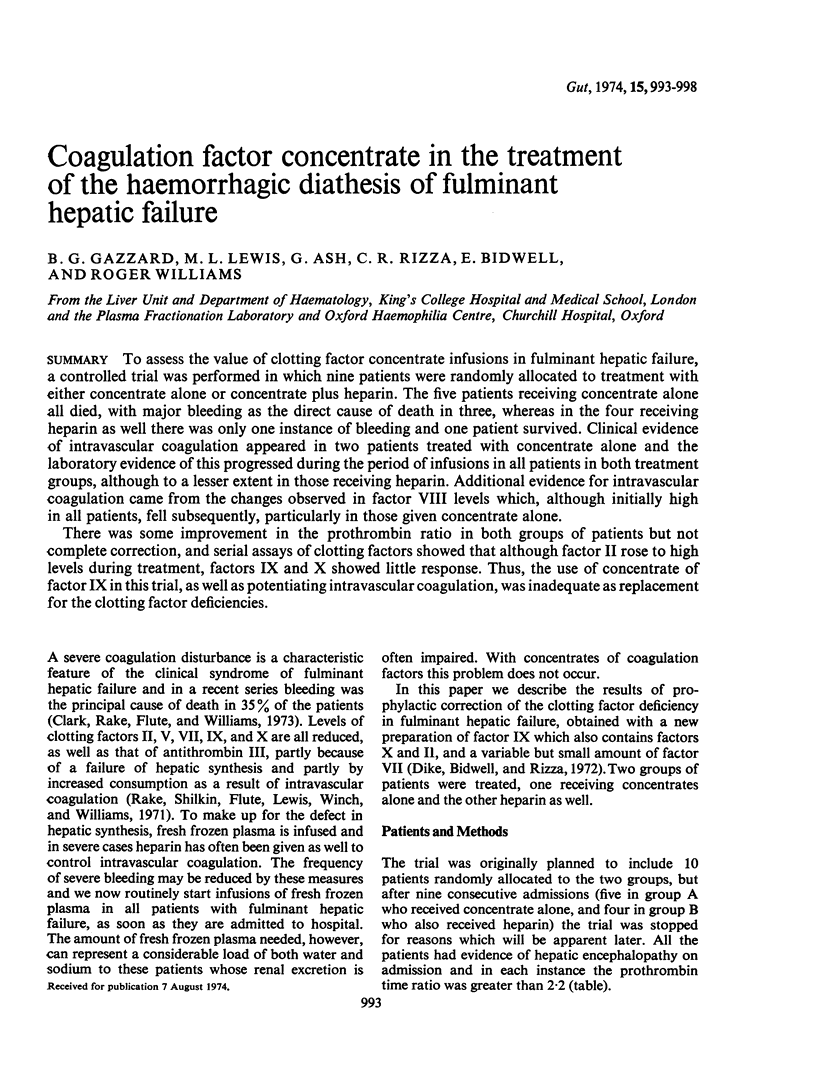
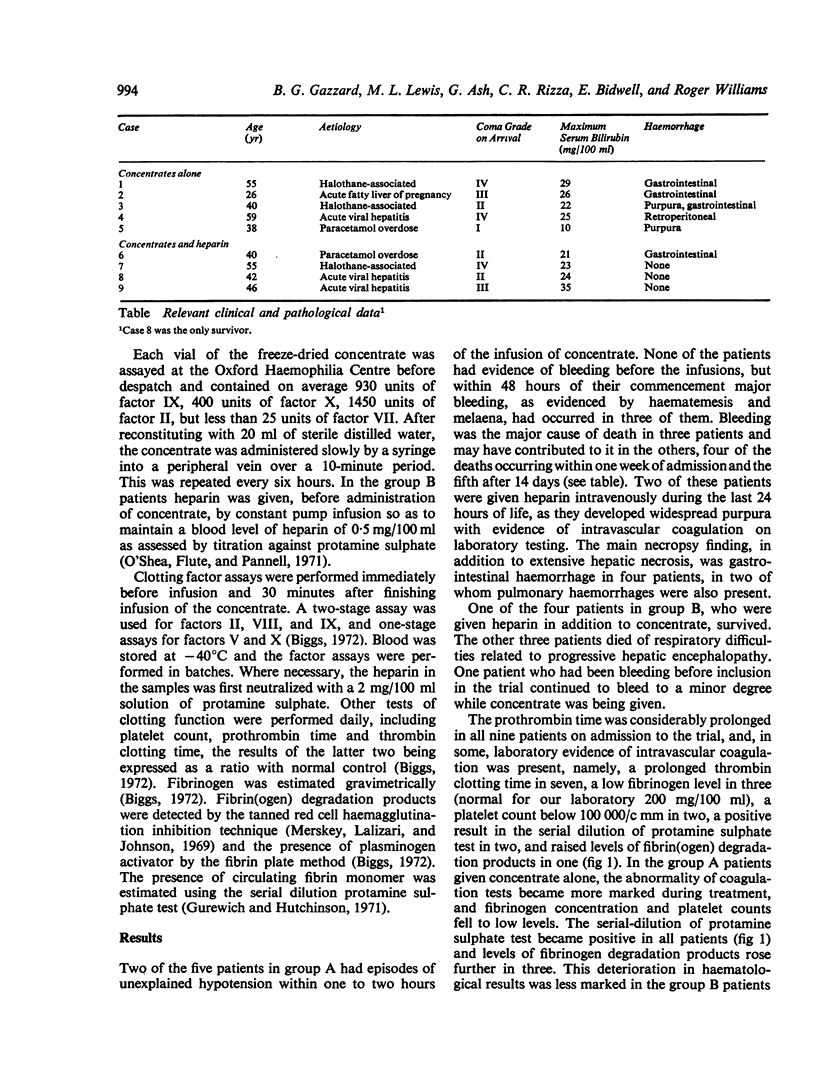
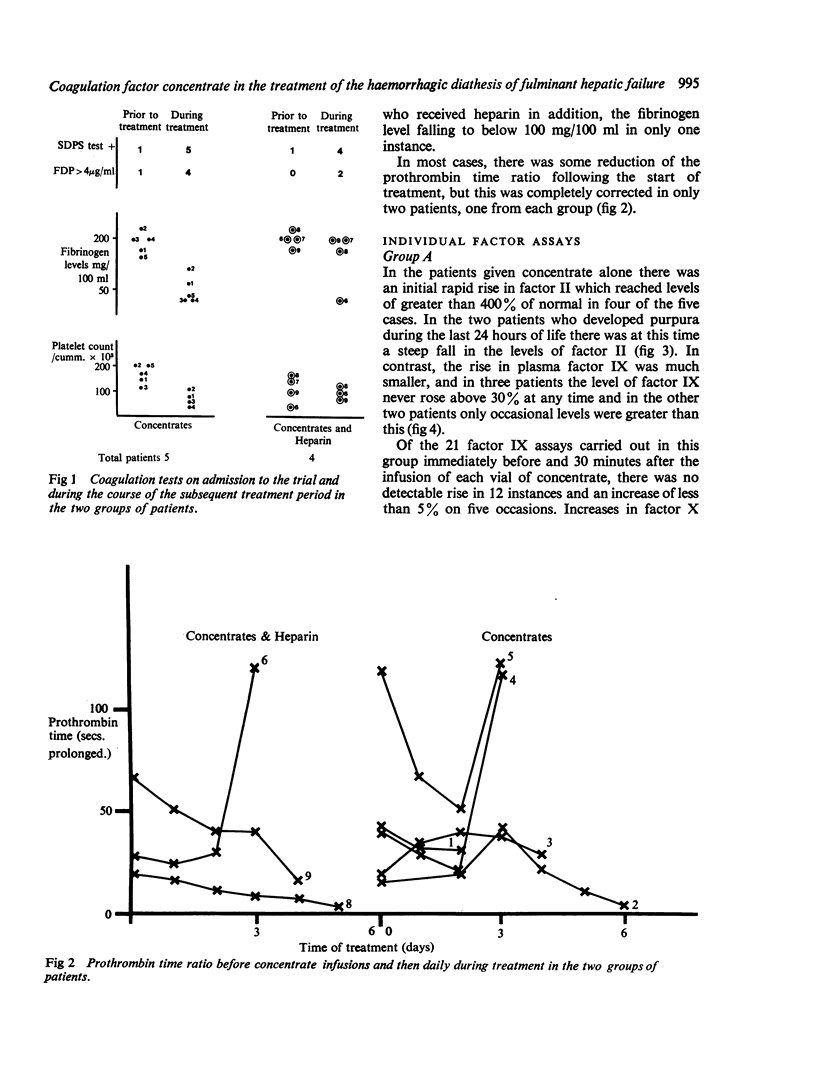
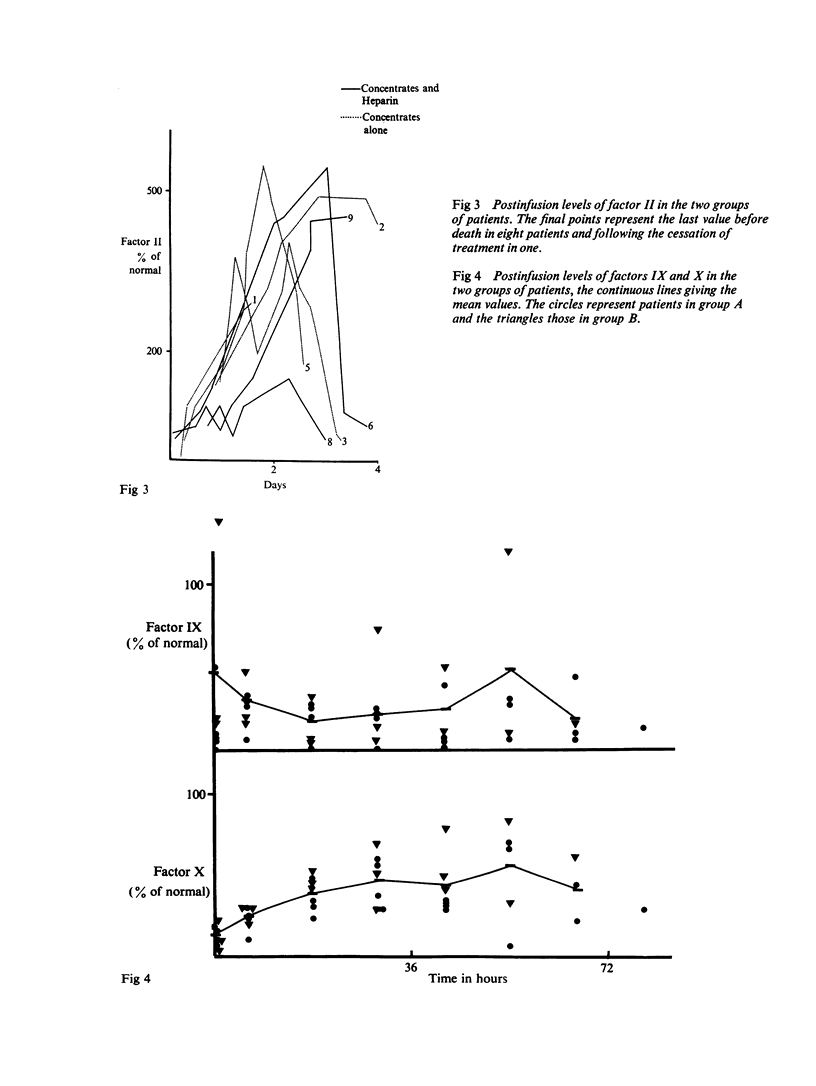
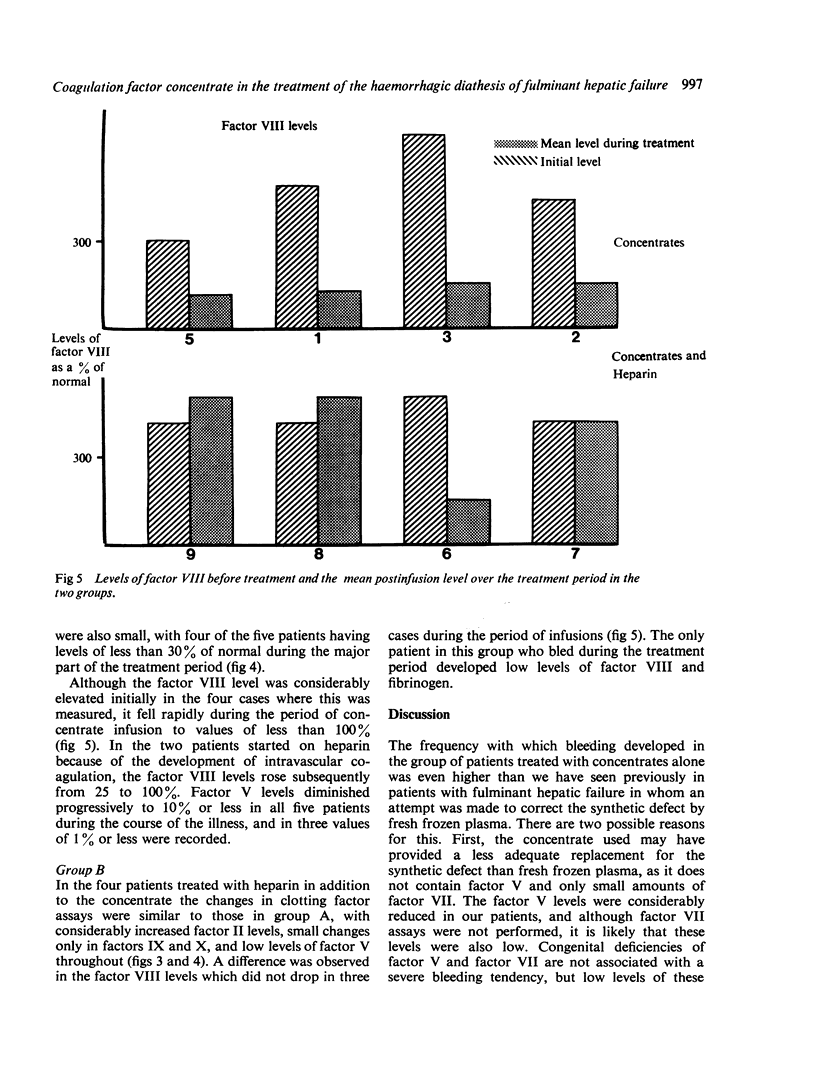
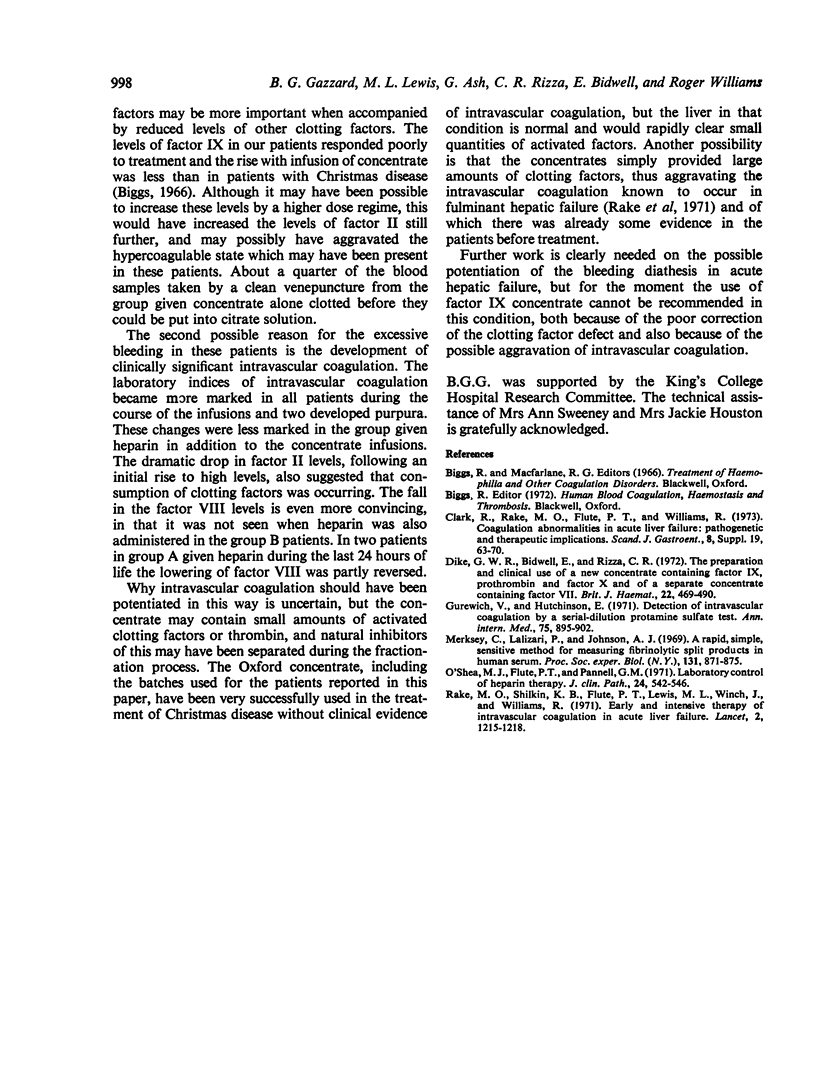
Selected References
These references are in PubMed. This may not be the complete list of references from this article.
- Clark R., Rake M. O., Flute P. T., Williams R. Coagulation abnormalities in acute liver failure; pathogenetic and therapeutic implications. Scand J Gastroenterol Suppl. 1973;19:63–70. [PubMed] [Google Scholar]
- Dike G. W., Bidwell E., Rizza C. R. The preparation and clinical use of a new concentrate containing factor IX, prothrombin and factor X and of a separate concentrate containing factor VII. Br J Haematol. 1972 Apr;22(4):469–490. doi: 10.1111/j.1365-2141.1972.tb05693.x. [DOI] [PubMed] [Google Scholar]
- Gurewich V., Hutchinson E. Detection of intravascular coagulation by a serial-dilution protamine sulfate test. Ann Intern Med. 1971 Dec;75(6):895–902. doi: 10.7326/0003-4819-75-6-895. [DOI] [PubMed] [Google Scholar]
- Merskey C., Lalezari P., Johnson A. J. A rapid, simple, sensitive method for measuring fibrinolytic split products in human serum. Proc Soc Exp Biol Med. 1969 Jul;131(3):871–875. doi: 10.3181/00379727-131-33998. [DOI] [PubMed] [Google Scholar]
- O'Shea M. J., Flute P. T., Pannell G. M. Laboratory control of heparin therapy. J Clin Pathol. 1971 Sep;24(6):542–546. doi: 10.1136/jcp.24.6.542. [DOI] [PMC free article] [PubMed] [Google Scholar]
- Rake M. O., Flute P. T., Shilkin K. B., Lewis M. L., Winch J., Williams R. Early and intensive therapy of intravascular coagulation in acute liver failure. Lancet. 1971 Dec 4;2(7736):1215–1218. doi: 10.1016/s0140-6736(71)90540-x. [DOI] [PubMed] [Google Scholar]


